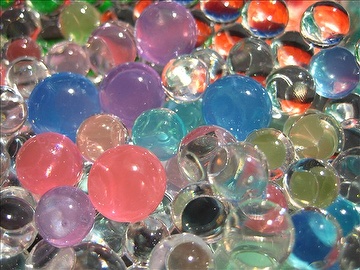

The smallest grade of perlite ranges from 1/16 to 1/128 inches. Its dimension fit well with containers measuring one to three inches in width. With 46% water-holding strength, it works perfectly for potted plants and seedlings, even without other conditioners. This middle grade of perlite lies between the coarse and fine versions, measuring 1/8 to 1/32 inches. It is too big to fuse completely with soil, but you can use it with your succulents and orchids.Ĭlick here to see this chunky perlite on Amazon. This type of perlite facilitates balanced draining and absorption. It varies in size from 3/16 to 3/64 inches and has a 34% water-holding ability. CoarseĬoarse perlite is a flexible grade of perlite. Since these dimensions have good porosity for drainage and aeration, this type of perlite is suitable for hydroponics and orchid growing. Super-coarse perlite has a moisture-holding strength of 19%. Super CoarseĪs the largest size, super-coarse perlite ranges between 1/4 and 3/32 inches. Keep in mind that pieces of perlite can easily be broken into smaller chunks. We've created a brief guide to help you choose the right grade for your garden. You can purchase perlite in various sizes, from super coarse to fine.

In return, it develops into a healthier lawn or gardens with a deeper foundation and a higher root growth rate.Īeration is the solution for soggy roots, dry foliage, and plants affected by bacteria and fungi. It also minimizes the risk of over-watering. They counter soil compaction that makes the roots shallow. These glassy rocks function as water drainage and facilitate aeration for enhanced circulation of vital gases. If you place it in a pot, every nook and cranny naturally shrinks. The smaller the pore space, the greater the amount of water it can absorb. Despite its minute size, it carries a high surface area and porous crevices, allowing some water to maintain in the soil. Natural filtration system for stormwater.Perlite is a handy soil conditioner for these various applications, whether you are a residential or commercial grower. People use it in different industries: horticulture, medicine, water filter treatment, and construction. UsesĪcross the globe, several companies mine and manufacture this versatile rock to supply heightened demands. Perlite comes in three forms: expanded, vapex, and agricultural. Thus, it can resist mold growth or pest infestation, making it long-lasting and non-compostable.
#ROCKS THAT ABSORB WATER FREE#
Similarly, it is free from added nutrients and remains lightweight despite expanding when heated.īecause it is an inorganic element, it has high stability and no expiration date. While it is mostly comprised of silicon dioxide and other elements, it also bears 2 to 5% of water.įor this reason, it maintains a neutral pH between 7 to 7.5. Its chemical name is sodium potassium aluminum silicate.

It resembles small pebbles or crushed styrofoam. Perlite is a white-colored natural glass that comes from volcanos. So, keep on reading to gain more insights. We will also explore its uses, types, qualities, application, alternatives, and other related questions. In this post, we have a detailed discussion of perlite. Perlite is among the dozens of soil conditioners widely used in horticulture. The aeration and moisture-holding capacity of perlite will differ depending on its grade. Mixing the right amount of perlite into any soil type supports better plant root penetration and drainage. Perlite is valuable for soil aeration and water absorption while young plants are growing. To help you, we researched whether a dash of perlite can overcome these soil problems and aerate soil. Does your soil dry quickly or drain too long after watering? Perlite is a readily accessible rock you can incorporate in potting soil mixes.


 0 kommentar(er)
0 kommentar(er)
